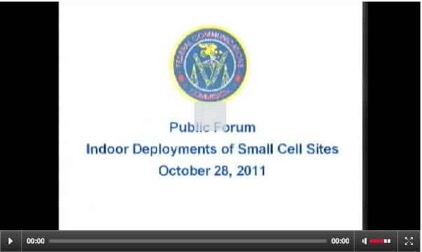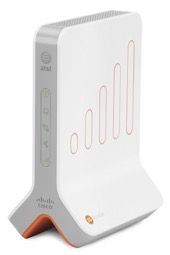FCC Forum on Indoor Deployments of Small Cell Sites

On October 28, 2011 FCC held a Public Forum on Indoor Deployments of Small Cell Sites in the Commission Meeting Room with live video online. The forum was organized by the Wireless Telecommunications Bureau, in conjunction with the FCC's Technical Advisory Committee (TAC) Small Cell working group and Spectrum Task Force. I have been somewhat critical of how little the TAC has been asked to do and how little it has accomplished since its formation, but this was certainly a positive move and the FCC staff and the TAC members certainly deserve credit for bringing public attention to this important issue.
The FCC PN on the event said,
Recent developments in technology offer an increasingly wide array of products to provide wireless coverage and capacity in limited or confined areas. Together, they offer potentially useful solutions to addressing the exploding demand for spectrum that is being driven by the exponential growth in wireless data services. The forum will provide an overview of small cell technologies currently available or soon to come on line, including software defined radios and enhanced Wi-Fi in both licensed and unlicensed spectrum. In addition, panelists will explore the business opportunities and challenges involved in expanding wireless data coverage. Finally, the forum will assess the potential economic impact of small cell deployments, particularly with respect to job creation, and explore possible policy approaches.

That is what was basically discussed and the forum dealt with both femtocells that act as tiny base stations for cells phones indoors and then connect to the network over the internet - effectively limiting CMRS spectrum use to very short distances - and Wi-Fi base station that extend the network to phones and smart phones that have both Wi-Fi and the more usual CMRS modulations. The cellular industry’s love/hate relationship with unlicensed in general and Wi-Fi will be the subject of a future post here - stayed tuned!
What was interesting to your blogger was also what was not discussed. This fell into two basic categories. Will the growth of indoor small cells impact the voracious demand for spectrum of the CMRS gang? Although the official CTIA party line is that spectrum is the only way to solve the “shortfall” and this is dutifully echoed in the FCC’s recent “infographic” , it would appear that the technologies discussed at the forum would also have an impact on spectrum needs. As we have stated before here, wireless capacity is a function of 3 factors: spectrum, technology, and infrastructure. The speakers successfully evaded this issue.
A second issue is whether femtocell technology should only be used for connections to the public switched network or Internet using standard CMRS modulations. Today’s cellular industry is focused on “killer apps” like iPhone that can affect there bottom line in massive ways and has little or no interest in niche markets. For several years your blogger has been trying to interest cellular carriers and manufacturers in using variants of femtocell technology to meet niche applications that otherwise would require dedicated bands.
Independently, Qualcomm began and R&D project exploring such an complementary use of cellular spectrum and earlier this year announced it as FlashLinq™which “operates in licensed spectrum as a managed service”. This is an example of using short distance links in CMRS spectrum to meet needs not served by traditional CMRS services such as short range communications. While unlicensed spectrum might be used for such uses, CMRS spectrum under carrier control offers the potential of much higher reliability. It would both fill the “white space” that is inevitable in an operational cellular spectrum and created new revenue for the carriers. Services that might be provided include wireless microphone services where a high density is required such as in theaters and concerts and medical information in hospitals where great reliability is needed. But such niche services are not “killer apps” in the eyes of the CMRS top leaders.
Well, here is another way to look at it: Niche markets like wireless microphones and medical uses all have as their preferred solution dedicated exclusive spectrum. We have seen more medical allocations in the US in recent years and other countries have dedicated wireless mic bands. Maybe the leaders of the CMRS community should not look at these applications and innovative technology such as FlashLinq not as a modest revenue source but as a way to eliminate spectrum competitors who are competing at FCC’s trough for the same spectrum the CMRS community seeks. So it may not matter if such applications are not “killer apps” if serving them in existing CMRS spectrum eliminates another roadblock to increased CMRS spectrum.



![Validate my RSS feed [Valid RSS]](valid-rss-rogers.png)

